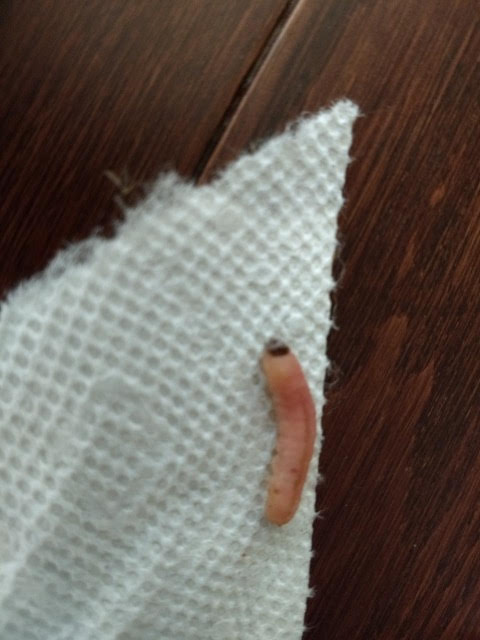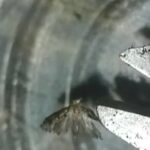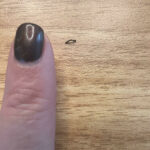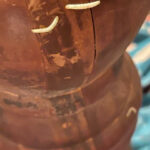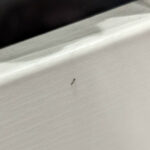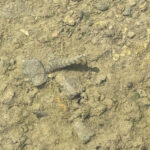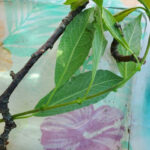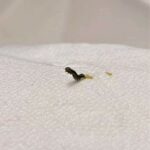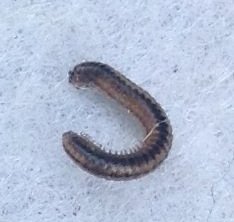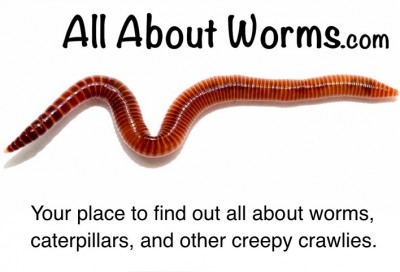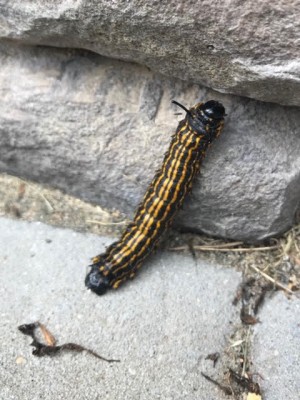
“How do you distinguish oak worms from asp caterpillars?” is all this reader writes in her submission. She does not attach any photographs, but in this case, that’s not necessary. The two creatures she asks about are moth species, and they are actually very different. Sure, they are both defoliators, and eat leaves from the respective trees they are named after, but just appearance-wise, they are night and day, and are very easy to distinguish. So, in essence, our reader made our job really easy for us.
Oak worms are the caterpillars of the oak moth. The caterpillars tend to be a bright yellow or green colour, with dark stripes running down the sides of their bodies. They have bulbous brown heads, and visible prolegs. The older the caterpillar, the more of a leaf they will eat, and their presence on a tree is usually quite visible: whether it is spotting the caterpillars themselves, or seeing the leaves spotted with holes. Generally speaking, oak trees are quite resistant to infestations, and can maintain their health despite an invasion of oak worms. That said, they can prove to be annoying nonetheless. These caterpillars travel in groups (known as an army), and when they are done with one oak tree and in search of another, they will climb over whatever is in their way, which includes people’s homes. Because of that, they have been known to, at times, enter people’s homes and pupate there. To see what these caterpillars look like, our reader can visit the University of California’s “webpage on oak worms“. We have also included a photo sent by a past reader of an orange-striped oakworm, pictured below.

Asp caterpillars are the larval form of flannel moths. They get their name from the appearance of their wings, and the caterpillars have quite a unique appearance themselves. The caterpillars also go by a number of names, like puss caterpillars, fire caterpillars, and the woolly slug. The best way to describe an asp caterpillar is by comparing them to a toupee. You can’t even see a caterpillar in there. They just look like soft, brown balls of fur. Unfortunately, their appearance has led people to touching them and suffering the consequences. The ‘fur’ on asp caterpillars is not really fur at all, but bristles. Bristles that contain a potent toxin that can cause irritation, rashing, and extreme pain to those that touch them. Children who have touched asp caterpillars have even needed to be hospitalized. So, if anyone sees what looks like a clump of fur on a leaf, tree, or anywhere in nature, avoid it! To see what these critters look like, our reader can visit Texas A&M Agrilife Extension’s “webpage on asp caterpillars“.
To conclude, that’s a brief overview of the main differences between oak worms and asp caterpillars. The easiest way to distinguish them is by sight, fortunately! We hope this answers our reader’s question to a satisfactory degree, and we wish her the very best!
All About Worms is always free, always reader-supported. Your tips via CashApp, Venmo, or Paypal are appreciated! Receipts will come from ISIPP Publishing.
You might also find these guys interesting!
